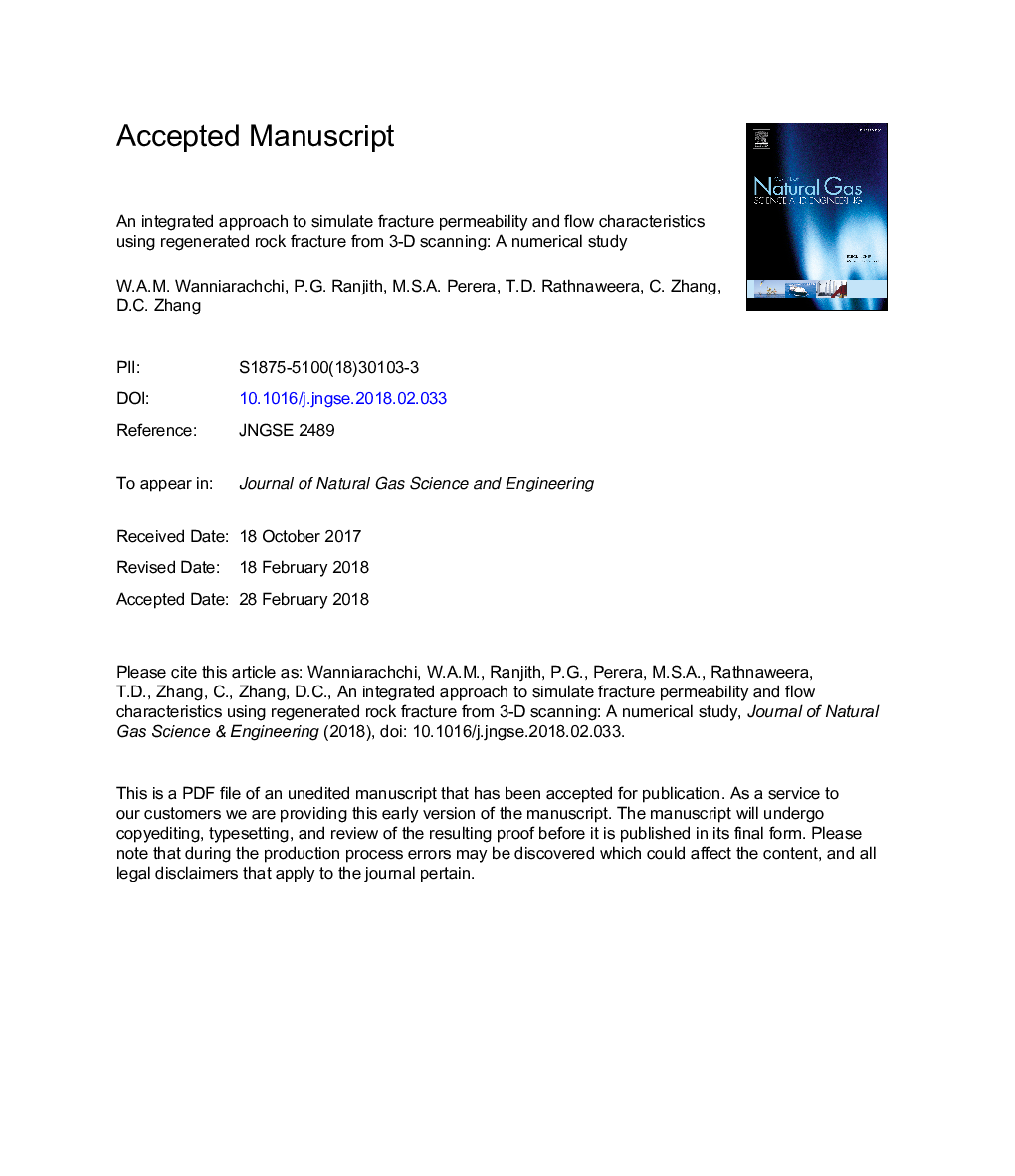| Article ID | Journal | Published Year | Pages | File Type |
|---|---|---|---|---|
| 8128175 | Journal of Natural Gas Science and Engineering | 2018 | 40 Pages |
Abstract
Fluid flow in a rock fracture bounded by two rock surfaces with surface asperities is a complex phenomenon to study. However, precise knowledge of the flow characteristics through a real rock fracture is essential in order to design and estimate the efficiency and production of unconventional oil and gas exploration and geothermal energy extraction projects. The aim of this numerical study, is therefore to incorporate a rock fracture in the modelling platform using a pre-processing procedure and to couple it with the flow parameters. 3-D scanning technology was used to obtain the rock fracture surfaces and to generate the fracture profile in a grid matrix form. In addition, the generated fracture profile was imported in to the COMSOL Multiphysics software package to simulate the flow characteristics of the rock fracture. The COMSOL model was validated using experimental permeability results conducted under triaxial conditions. According to the results, the COMSOL numerical model can simulate the flow characteristics through the rock fracture with more than 90% accuracy compared to the experimental data. The numerical results also reveal that the pressure gradient through a rock fracture is nonlinear and depends on the fracture profile. Furthermore, the nonlinearity of pressure gradient varies on different sections of the fracture, confirming the heterogeneity nature of the fracture. In addition, the results illustrate that the entire fracture width does not contribute to the final flowrate and that it is essential to consider the effective fracture width in flow calculations.
Related Topics
Physical Sciences and Engineering
Earth and Planetary Sciences
Earth and Planetary Sciences (General)
Authors
W.A.M. Wanniarachchi, P.G. Ranjith, M.S.A. Perera, T.D. Rathnaweera, C. Zhang, D.C. Zhang,
